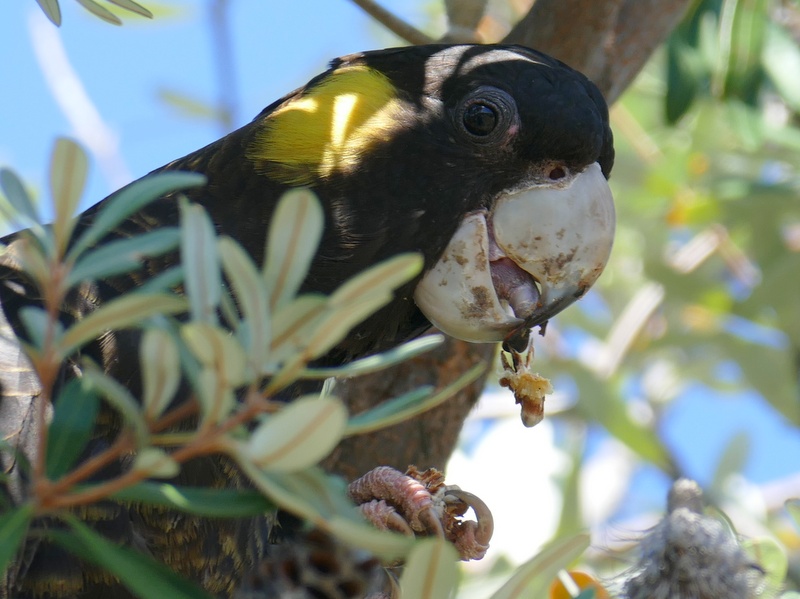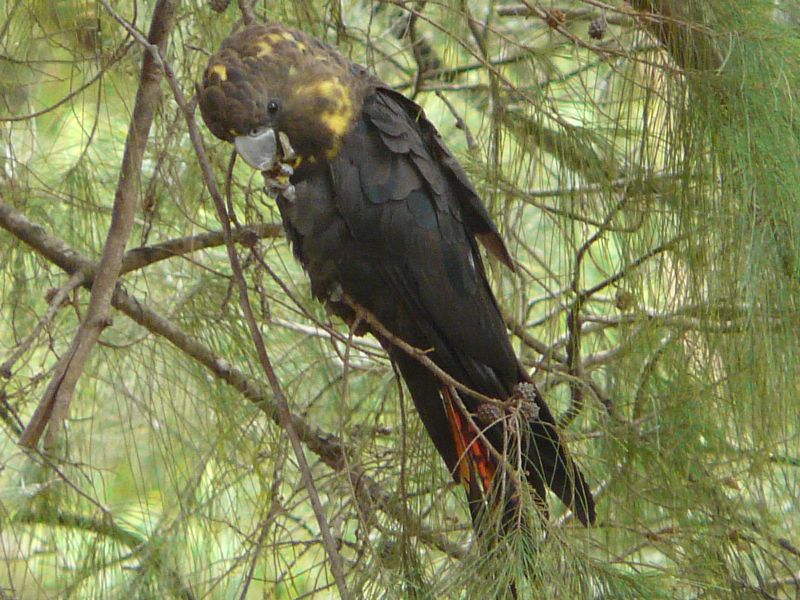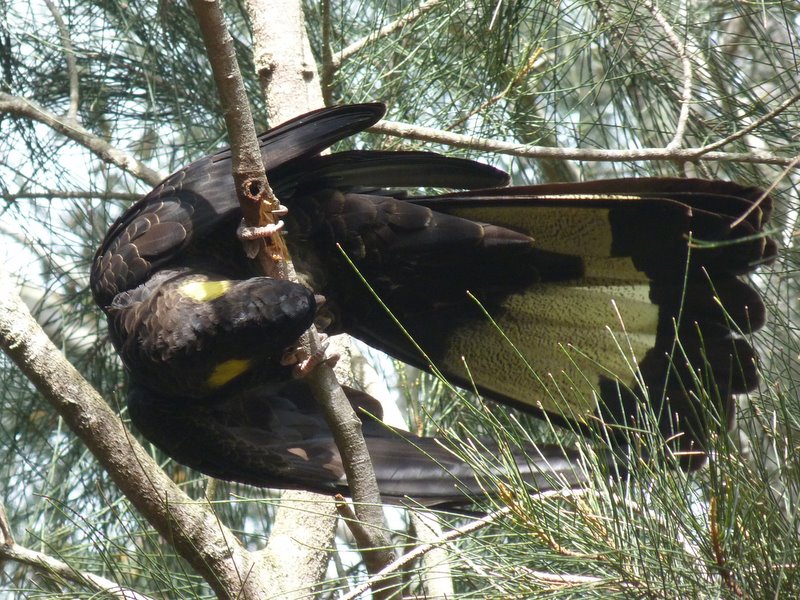
Female Yellow-tailed Black-Cockatoo (with white bill) munching on banksia seeds. Photos: Ian Fraser.
In a recent RiotACT column on banksias, I mentioned black-cockatoos in passing – and nearly all the subsequent comments focussed on them, not the poor banksias!
So, it seems that the cockies need a column all to themselves, and as a huge fan of them, I’m happy to oblige.
We get two species in the ACT. Yellow-tailed Black-Cockatoos are widespread, small flocks of huge birds rowing purposefully across the sky and descending to feed, such as on our banksia cones.
There are also, very rarely, smaller Glossy Black-Cockatoos which occasionally visit to feed exclusively on the dust-tiny seeds of casuarinas (she-oaks) especially on Mount Majura. They have red tails, which sometimes understandably lead to claims of Red-tailed Black-Cockies in the ACT, but those big birds are restricted to the tropics and parts of the dry inland.

The Glossy Black-Cockatoo, a rare visitor to Canberra.
Before 2003 the Canberra Yellow-tails fed and roosted widely in the exotic pine plantations of the south-western suburbs, but the fires removed the plantations and the cockies scattered throughout the suburbs.
Their slurred wailing ‘wee-oooo’ calls regularly drift down from Canberra skies. The folk name Wylah derives (via Indigenous languages) from this call.
There are persistent folk yarns about black cockies (among several other Australian bird species) being harbingers of rains, but sadly these are just stories. Bear in mind that black cockies are present here all year round, though many move into the mountains in summer, and it certainly doesn’t rain every day in the ACT.
I guess we tend to remember the times that such predictions work out (as of course, they must from time to time) and conveniently forget all the times that they don’t!

Yellow-tailed Black-Cockatoo ripping into sapling to extract grubs.
To watch them feeding – when they can often become absorbed in the task and allow us to watch – is first to be reminded of just how big they are, a good 60 cm long with massively powerful bills.
They easily crush the tough woody banksia cones, having nipped through the stem, and extract the seeds. We always know when they’re visiting even without the quiet ‘wee-oo’ contact calls, as the discarded cones crash onto our little balcony.
However, they have another, very different food preference which also relies on the mighty bills. They have a particular fondness for the big white grubs, like pale sausages, of cossid moths which chew through the solid wood of wattle and eucalypt trees. (That’s a story in itself, but one for another day.)
The grub-seeking cocky, usually part of a loose flock, has different strategies for the softer wattles and the hard eucalypts. For the wattles, they just bite into the soft trunk to see if it’s hollow, then rip straight into it.
Eucalypt timber, however, is a very different proposition.
The bird inspects the trunk to identify the holes through which the industrious grub ejects its sawdust droppings (‘frass’). So far it has been using its tail as a prop, but now it needs a firmer platform, so it chews and hauls a strip of timber out to a 45-degree angle and stands on it while it excavates with its great tool of a bill. The end result, which may take some time to achieve, is a fat wriggling protein prize.
A hollow suitable for black cocky breeding is only found in mountain eucalypts at least 200 years old. It remains to be seen what effect the calamitous fires of the summer just gone might have on the ability of the cockies to reproduce.
Raucously begging youngsters often accompany the flocks, but they may have come from as far away as Victoria or the NSW north coast – our knowledge of their movements is sketchy.
As far as I am aware there is only one breeding record from the ACT, a historic one and, tragically, from a tree cut down in the ranges in days long before the protection of Namadgi National Park.
For now, however, the black cockies are very much a part of our lives. Any day that they visit is a good one.
Ian Fraser is a Canberra naturalist, conservationist and author. He has written on all aspects of natural history, advised the ACT Government on biodiversity and published multiple guides to the region’s flora and fauna.












